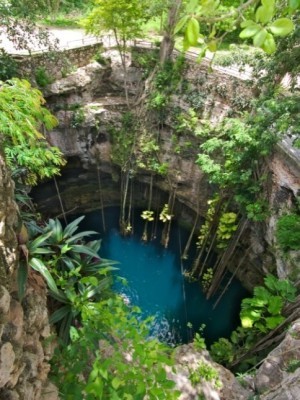

Join us on an adventure on Mexico’s beautiful Yucatán Peninsula and experience Playa del Carmen, Valladolid, Chichen Itza and conclude with a beach holiday on Isla Holbox’s paradise beaches.
It’s nothing short of magical to see the sun’s rays penetrating the opening of a cenote falling from a cloudless sky.
The rays illuminate the azure and turquoise colours of the water, which stand in stark contrast to the darkness of the cave and the green plants growing down the sides.
We’re completely blown away by Mexico’s beautiful cenotes!
The beautiful, natural freshwater holes are found all over the Yucatán Peninsula in Mexico, but offer very different experiences and impressions. However, all of them are much-needed oases in the Mexican heat, where you can enjoy a refreshing dip.
Read our guide to Yucatán’s subterranean treasures below.
The Mexican cenotes of the Yucatán Peninsula are natural underground waterholes, formed by the collapse of the limestone layers that cover the peninsula. The cenotes have a unique geological origin and were formed many millions of years ago.
Each cenote has its own unique features, and they all vary in size, shape and depth. Some cenotes are open and easily accessible, while others have to be explored through caves or underground passages with snorkelling or diving equipment.
While the cenotes have today become popular attractions for visitors and locals alike, in ancient times they were of huge significance to the Mayan beliefs – and not least survival.
For the Maya, cenotes represented important openings to the underground world known as Xibalba.
According to Mayan beliefs, Xibalba was a place of divine powers and spiritual significance.
The Maya considered cenotes sacred and an indispensable part of their everyday lives. These natural water sources were not only important for drinking water but also for ceremonial purposes. The cenotes were often used as sacrificial sites, where the Maya offered up objects such as pottery, jade and even humans to appeal to divine powers and ensure prosperity and protection.
Cenotes also played a central role in Mayan agriculture as they were reliable sources of water in the otherwise arid climate. The Maya created complex irrigation canals and cultivation areas around cenotes to maximise their agricultural production.
Today, cenotes serve not only as historical and cultural evidence of the Maya civilisation but also as unique attractions for visitors to the Yucatán Peninsula in Mexico. In many places, the cenotes also continue to be a source of water for the locals.
Some estimates put the number of cenotes on the Yucatán Peninsula at 6,000+. Some of them are well-known destinations, while others are more remote, with fewer visitors.
It’s impossible to experience them all, but we highly recommend that you experience at least one of these unique natural phenomena when you’re in Mexico.
We’ve selected 7 places that you can choose to visit on our tours to Mexico, where you can experience the unique cenotes.
Why chose Santa Bárbara?: There’s something for everyone here – Santa Bárbara has three different cenotes. Cenote Cascabel is a grotto that only has a small entrance from the outside, where the rock formations and water are indirectly lit, giving you the feeling of being in another world. Cenote Chacsikín has a small light hole at the top, which illuminates the 16-metre-deep turquoise water. Cenote Xooch is an open cenote with a water depth of around 40 metres. The cenote gives you the feeling of being in a small oasis, surrounded by jungle.
Popularity: Santa Bárbara is a popular place to visit, but as the area is generally larger and there are more cenotes, it doesn’t feel nearly as busy as some of the other places.
Facilities: Changing rooms and shower. Lockers for clothes and valuables. Restaurant and souvenir shop at the site.
Safety: Life jacket is mandatory.
Admission: approx. 350 MXN
Why choose Ik Kil: Ik Kil is a really beautiful, open cenote with lush vegetation hanging down from the top. A steep staircase with a handrail leads you down to the cenote. It is possible to bathe in the refreshing, fresh water and jump in from a rock ledge. The deep gorge and turquoise water make Ik Kil a popular stop for swimming and diving to a depth of 48 metres.
Popularity: Ik Kil is extremely popular, so be prepared for there to be a lot of visitors.
Facilities: Good changing facilities and outdoor shower. Lockers for clothes and valuables. Restaurant and kiosk at the site.
Safety: Lifeguards. Life jacket is mandatory.
Admission: approx. 200 MXN
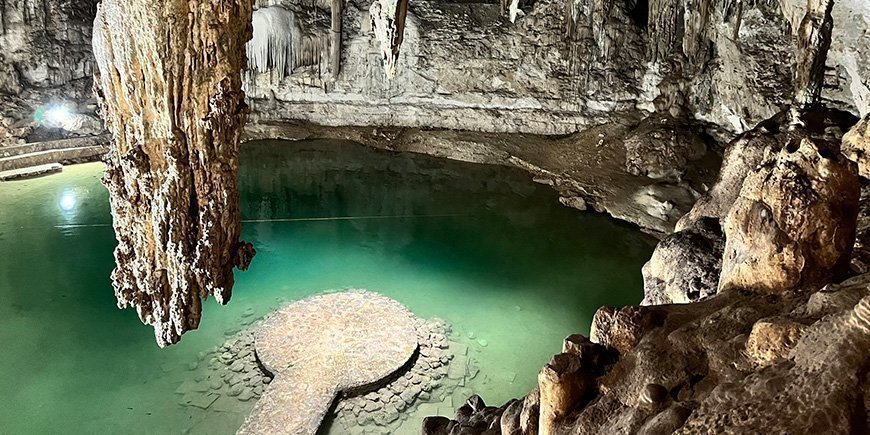
Why choose Suytun: Cenote Suytun is a spectacular sight. A long staircase leads you down into a grotto with only a small light hole at the top. It is also possible to swim here among small fish, but a lot of visitors come here only to see the beautiful cenote and to take pictures. If you want to go swimming, it’s a good idea to bring water shoes, as the water is very shallow and quite stoney on the bottom in places.
Popularity: Suytun is a popular place, and we recommend planning a visit early in the day. A lot of visitors queue to take pictures at noon, when the sun’s rays shine through so that the light hits a platform in the water in the middle of the cenote.
Facilities: Changing rooms and shower. Lockers for clothes and valuables. Restaurant and kiosk at the site.
Safety: Life jacket rental available.
Admission: approx. 250 MXN
Why choose Oxman: Cenote Oxman is an open cenote with lush plant growth and tree roots down the sides that make you feel like you’ve landed in the middle of a film set. You can swim in the fresh water with small fish swimming around you, or swing out, Tarzan-style, on the rope from the edge.
Popularity: There are a lot of visitors, so ideally come early.
Facilities: Changing rooms and shower. Lockers for clothes and valuables. Restaurant and kiosk at the site. Pool with sun loungers.
Safety: Life jacket rental available.
Admission: approx. 150 MXN
Why choose Gran Cenote: Gran Cenote consists of two open cenotes where you can swim through a grotto that connects them. It’s a popular place to go to swim, snorkel and dive, as the water in the cenotes is crystal-clear and full of life. There are both small fish and turtles swimming around, and bats that live inside the cave. Bring your own snorkelling gear or rent it on site so you can really study the freshwater hole and the life within it.
Popularity: Gran Cenote is a popular place, and we recommend planning a visit early in the day.
Facilities: No changing rooms, but there are bathrooms and outdoor showers. Lockers for clothes and valuables. Large lawn where you can relax. No restaurant or bar.
Safety: Life jacket is mandatory.
Admission: approx. 500 MXN per person
Why choose La Calavera: La calavera means “skull” in Spanish, which you can see if you look at the cenote from the right angle – and with a little imagination. Located just a few hundred metres from Gran Cenote, it is nevertheless a little different. Offering the opportunity to jump down through the skull’s mouth and eyes, it tends to attract slightly more adventurous souls. There is also the option of taking the stairs down and exploring the underground waterhole. The area around the cenote is nicely decorated with colourful flags and skulls.
Popularity: Medium, as it’s not for everyone (not child-friendly).
Facilities: No changing facilities and only a few toilets and outdoor showers. Sun loungers around the cenote. Bar on site. (Nov. 2023 – They are currently building a restaurant and better changing facilities).
Safety: No lifeguards. Life jacket rental available.
Admission: approx. 250 MXN
Why choose Cenote Dos Ojos: Known for its crystal-clear water and impressive cave systems. Cenote Dos Ojos attracts many divers and snorkellers. The name translates as “two eyes” because of the two, closely-spaced cenotes that appear to be connected. It is possible to rent snorkelling equipment so that you can swim and discover the underground water hole for yourself.
Popularity: Cenote Dos Ojos is an extremely popular place, and we recommend planning a visit early in the day.
Facilities: No changing rooms, but there are bathrooms and showers. Lockers for clothes and valuables. Restaurant and souvenir shop at the site.
Safety: Life jacket is mandatory.
Admission: approx. 400 MXN
Please note: We visited the cenotes in November 2023, and prices, facilities, etc. may have changed since then.
Snorkelling equipment is available to rent at most cenotes, but otherwise it’s a good idea to bring your own if you wish to explore the exciting underwater world of the cenotes. Please note that it is only possible to pay by cash in most places.


Join us on an adventure on Mexico’s beautiful Yucatán Peninsula and experience Playa del Carmen, Valladolid, Chichen Itza and conclude with a beach holiday on Isla Holbox’s paradise beaches.
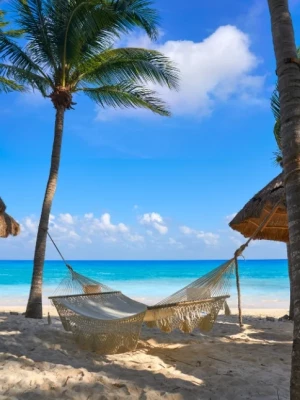

Join an exciting tour where you’ll experience Mexico’s impressive Mayan ruins, breathtaking nature, vibrant colonial towns, and local communities, finishing with a beach holiday in Playa del Carmen.
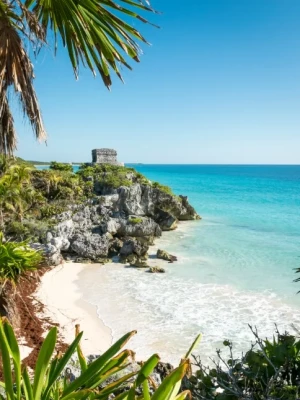

Discover the highlights of Mexico on an exhilarating tour featuring impressive Mayan ruins, magnificent landscapes, vibrant colonial towns, and authentic Mayan villages, concluding in the beach paradise of Tulum.
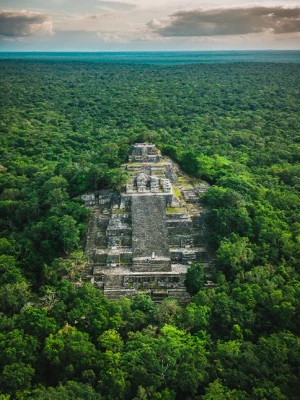

Look forward to experiencing the very best that Yucatán has to offer – from magnificent Mayan ruins and charming colonial towns to powder-white sandy beaches and a magical lagoon shimmering in seven shades of blue.
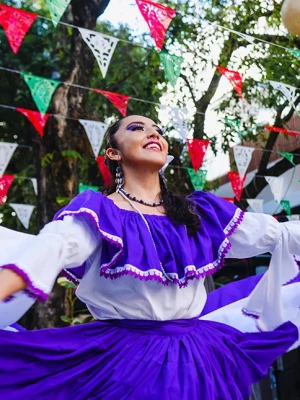

Experience Mexico’s magical blend of culture, nature, and history – from ancient Aztec capital and charming colonial towns, to awe-inspiring Mayan ruins and powder-soft Caribbean beaches.
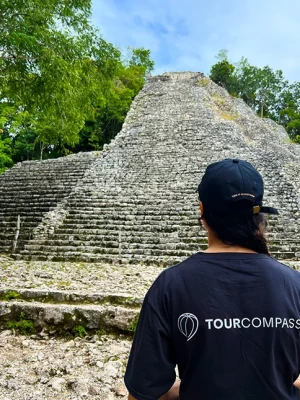

Magnificent Maya ruins, vibrant colonial history, and breathtaking natural wonders – get ready to experience some of the most captivating highlights of Yucatán.